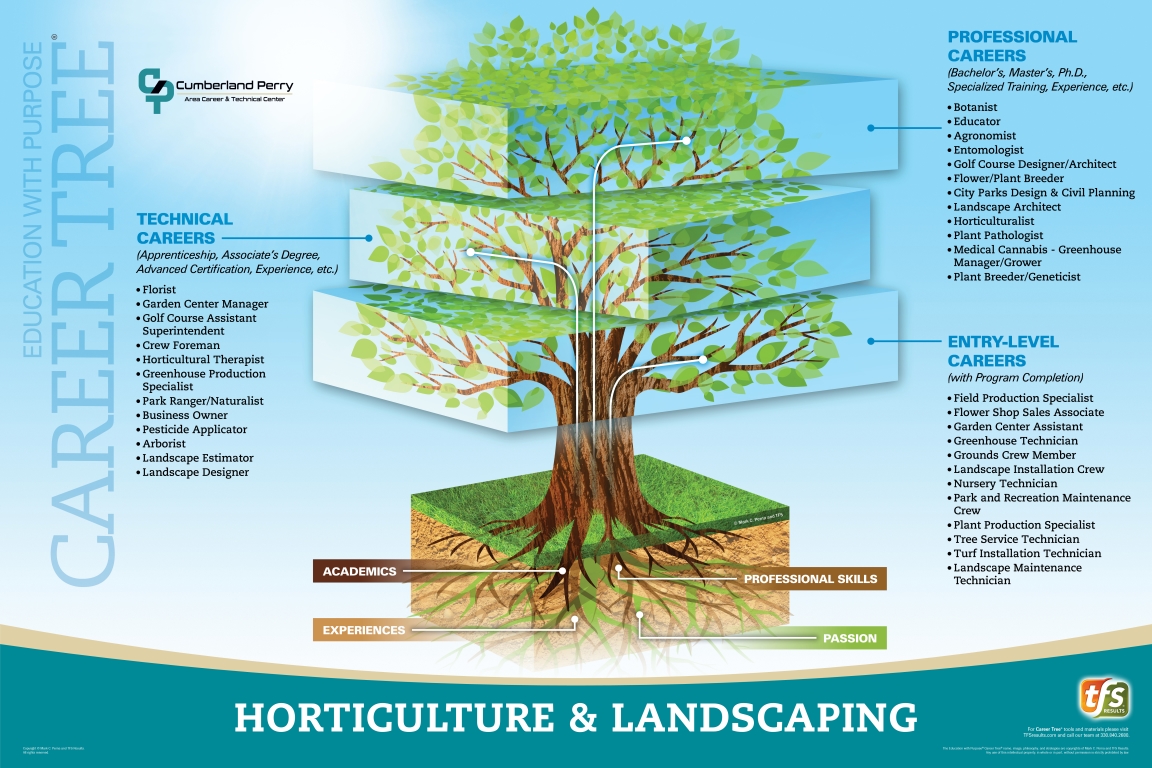Horticulture & Landscaping
What is Horticulture & Landscaping?
The Horticulture & Landscaping program focuses on landscape design, installation, and maintenance of residential and commercial properties. Students will gain experience in hardscape application, including: retaining walls, dry-laid paver patios, walkways, and pond installation. We are designing and developing an arboretum on campus for current and future students to learn how to plan, install, and maintain ornamental plant materials. Students will also have the opportunity to study hydroponics and different types of plant propagation in our newly-renovated greenhouse, and will explore the new technologies in the industry--along with sustainable practices--in our ever-changing field.
Students will also study a vast array of plant materials and gain customer service skills through our retail flower shop. In this part of the program, students learn the ins and outs of the floral design industry, including: corsages, weddings, sympathy arrangements, and traditional and modern design. Integrated Pest Management (IPM) and the safe use of pesticides is also emphasized.
Is it for You?
Students seeking education in this program should enjoy business-related, scientific, or physical activities. It is entirely possible for a professional in this field to either work alone, as a member of a team, or in some combination of these two settings, so those seeking this type of work should be comfortable with both possibilities. As with any career, employees may be managers or supervisors, or they may work under the guidance of a manager or supervisor; hours are typically 40 hours per week, but may range from 50-60 hours per week during peak seasons. Floriculturists tend to work in flower shops, greenhouses, and garden centers; aboriculturists spend most of their time outdoors, occasionally in bad weather; and landscapers perform seasonal work from March through December, usually involving difficult, manual labor (often in extreme temperatures and weather conditions) as part of a small work crew.
Additionally, the following skills are essential to be successful in this field:
Mathematical aptitude
Artistic ability (for designing landscapes)
Good physical stamina
Ability to work outside in hot and cold temperatures
Interest in plant life and science
Good eyesight (either naturally or with correction).
Program Objectives
| Level 1 Certifications: OSHA 10, First Aid/CPR (For Students Attending Only One Year of the Program)
POS TASKS:
|
Level 2 CHS: HORT 101 (Horticultural Careers)
POS TASKS:
Employability Skills Training Internship (3-Day Minimum) | Level 3 Certifications: PA Pesticide, OSHA 10, First Aid/CPR CHS: HORT 113 (Ornamental Plants)
POS TASKS:
Utilize Floristware software https://www.floristware.com/ OPTION 1: Certifications and Tasks As Described Above OPTION 2: Cooperative Education |
What's Next?
Potential Career Pathways
* Salaries listed are PA state averages taken from www.onetonline.com and are accurate as of 2020
Landscaping & Groundskeeping Workers ($31,600)
Landscape Architects ($63,130)
Greenhouse Managers ($87,590)
Floral Designers ($24,390)
Precision Agriculture Technicians ($44,180)
Soil & Plant Scientist ($63,200)
Pesticide Handler ($35,840)
Landscape Supervisor ($49,370)
...and many more
Post-Secondary Studies
*Many employment options in this field require additional study.
University of PA: Landscape Architecture
Penn College: Landscape/Horticulture Technology
Penn State: Turfgrass Science & Management

